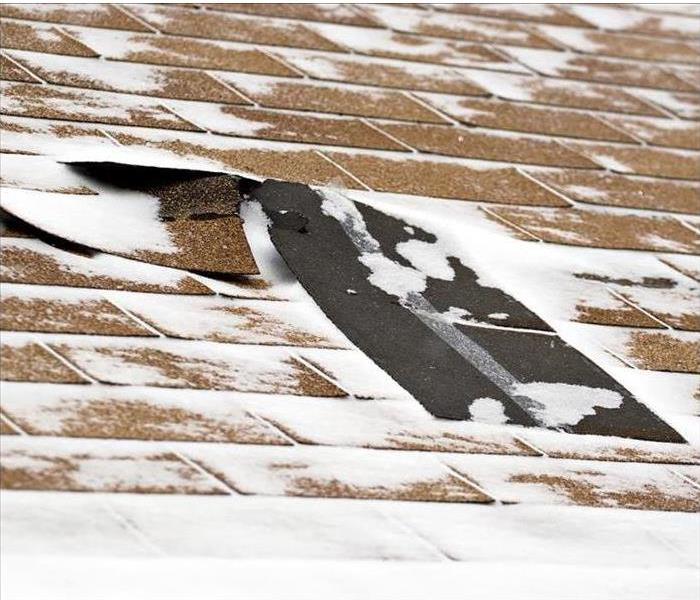Ways To Mitigate Further Roof Damage After a Storm
7/19/2022 (Permalink)
Residential storm damage encompasses many forms, from broken windows to floods. However, among the most common issues following severe weather is roof repair. Before a homeowner can receive funds from their insurer to repair the damage, they often need to ensure nothing else significant happens to the roof or the home, and there are at least three ways to do that.
4 Ways to Protect Your Roof After Storm Damage
- Plywood
Most roof damage following a storm will result in roof leaks. These leaks can stem from small or large holes in the roof. If the holes are not too large, a single sheet of plywood can be attached to the roof to limit any further water penetration into the home.
- Tarps
For holes requiring significant roof repair, a sheet of plywood might not be big enough. In these cases, you can opt for a tarp, weighing down the ends to ensure a secure fit. Tarps are lightweight and easier to manage than pieces or sheets of wood.
- Shingle Replacement
In some instances, wind damage will result in missing shingles. If you can find the shingles and replace them, you can potentially save yourself some money. However, when the shingles are blown from the roof, it is not uncommon for there to be more damage to the roof or the shingle.
- Call a Professional
Ultimately, the best way to resolve roof damage from a storm is to call a storm restoration company in North St. Paul, MN. These professionals have a working knowledge of insurer expectations and can help you mitigate further loss quickly.
It is not uncommon for a severe storm to lead to the need for roof repair. While the mitigation process sounds easy enough, using plywood and tarps to cover holes, it can be dangerous and is often best left to professionals. Residential storm damage is a complex issue, and every homeowner should familiarize themselves with the expectations of their insurance provider.

 24/7 Emergency Service
24/7 Emergency Service
